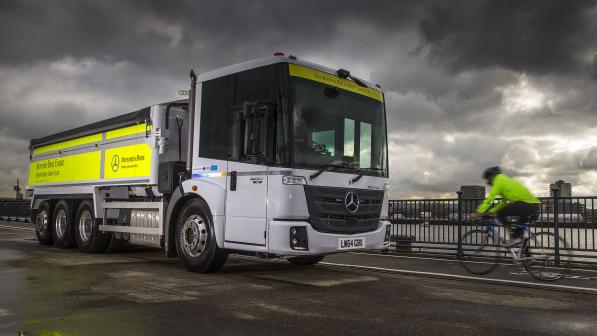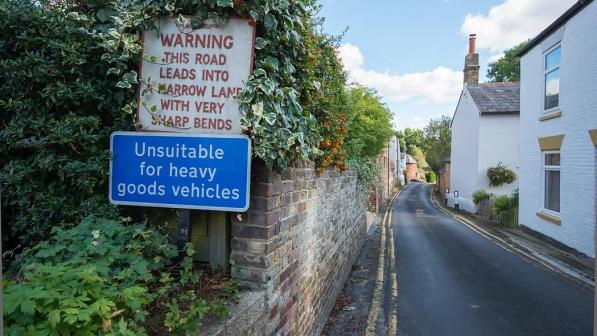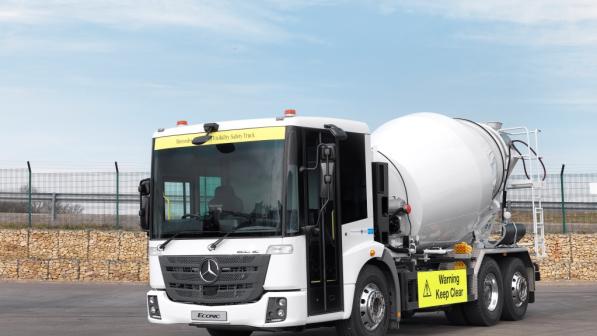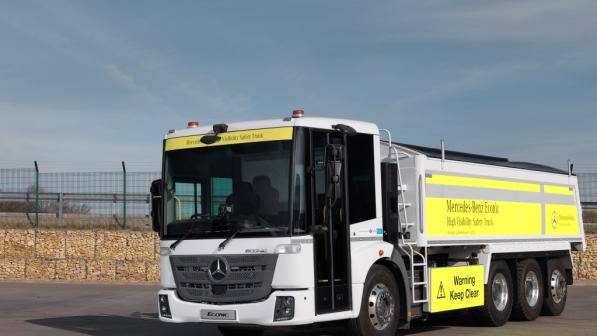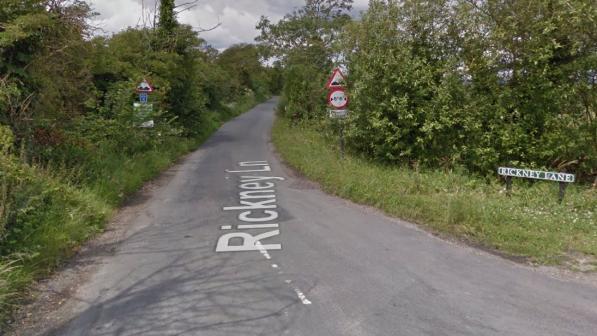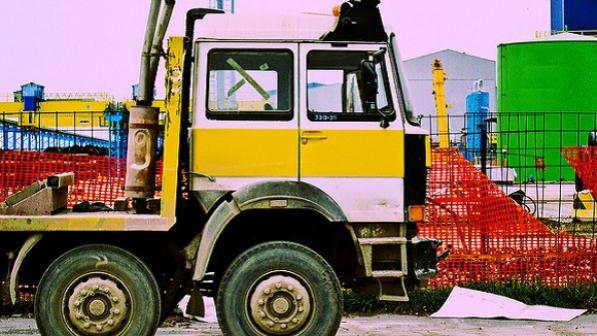Action on lorries

About the campaign
Cycling UK has long been campaigning for action on lorries, and continues to do so at every opportunity.
- From 2015-19 (GB), HGVs (heavy goods vehicles over 3.5 tonnes) made up only about 3.4% of non-motorway traffic in Britain, but were involved in about 16% of cyclist and 11% of pedestrian fatalities.
HGVs’ share of surviving casualties among cyclists and pedestrians is much less disproportionate, hardly surprising given that the likelihood of being killed rather than slightly or seriously injured in a collision with a massive, weighty vehicle is relatively high.
Urban streets, where people on bikes or foot are most likely to be, are particularly unsuitable for HGV travel and manoeuvres.
Lorries, though, can also be hazardous on country lanes, which is why we successfully took action to persuade a local council to block retrospective planning permission for a waste management service in Pevensey, East Sussex.
Cycling in the company of HGVs anywhere – whether in urban or rural areas – feels and is risky, and we know that it makes a lot of people think twice about cycling.
- About three-fifths (57%) of the respondents surveyed for us by YouGov in 2018 said that having to share the road with lorries and other large vehicles puts them off.
In cities especially, ‘left hooks’ and ‘blind spots’ are a known problem and, although many kinds of large goods vehicles, including refuse lorries, have hit, injured or killed vulnerable road users, construction vehicles such as cement lorries have been over-represented in cyclists’ fatalities in London.
This is why we called for and welcomed Transport for London’s (TfL) Freight Enforcement Partnership (LFEP) and its Direct Vision Standard (DVS).
LFEP takes a multi-agency partnership approach to tackling rogue and irresponsible operators. It involves the police, DVSA and TfL.
DVS requires HGVs over a certain weight to hold a safety permit based on the level of direct vision a driver has through the windows of their cab, ideally offering the kind of clearer view that bus drivers have. It’s already making a difference, and is better than relying on indirect and complex in-cab equipment like mirrors and cameras to detect cyclists and pedestrians nearby (although these devices, along with sensors, do have a place).
From 2015-19 (GB), HGVs (heavy goods vehicles over 3.5 tonnes) made up only about 3.4% of non-motorway traffic in Britain, but were involved in about 16% of cyclist and 11% of pedestrian fatalities
It’s important to remember, though, that the risk HGVs pose to cyclists affects other cities too, not just London. Edinburgh, Glasgow, Cardiff, Belfast, Manchester, Bristol (to name but a few) have also witnessed fatal and serious incidents.
This is why we want to see DVS and schemes modelled on LFEP rolled out all over the UK, and repeatedly call for other measures, including (in no particular order):
- Adopting CLOCS (Construction Logistics and Community Safety Standard) nationally for lorry equipment, driver training and fleet management. Local authorities should also make it a condition of planning permission
- Transferring loads from HGVs to smaller vehicles at depots at the edge of towns and cities and, where practical, employing cargo cycle couriers for ‘last mile’ deliveries
- Shifting as much longer-distance freight as possible to rail or water
- Safe routing/timing strategies for goods deliveries developed by councils and operators
- Making cycle awareness and practical cycle training a compulsory element of professional driver training and testing. This would, for instance, stress the importance of manoeuvring alertly and with extreme care at junctions
- Highlighting the hazards to cyclists and giving advice on how best to avoid them (Highway Code, Rule 74, advises: “Do not ride on the inside of vehicles signalling or slowing down to turn left”)
- Ensuring Traffic Commissioners use their powers to act against rogue and irresponsible operators and drivers, and are assured of the resources to do so
- Ensuring haulage companies and their representative bodies develop and maintain strategies to minimise the risks goods vehicles pose to cyclists and pedestrians
- Stipulating in public authority and other procurement policies that vulnerable road users’ safety must be considered in the delivery of services and goods
- Building cycle-friendly infrastructure, including segregated cycle lanes and safe junctions
Cycling UK does not support the recent introduction in Britain of Longer Semi Trailers (LSTs) with only ‘light regulation’.
